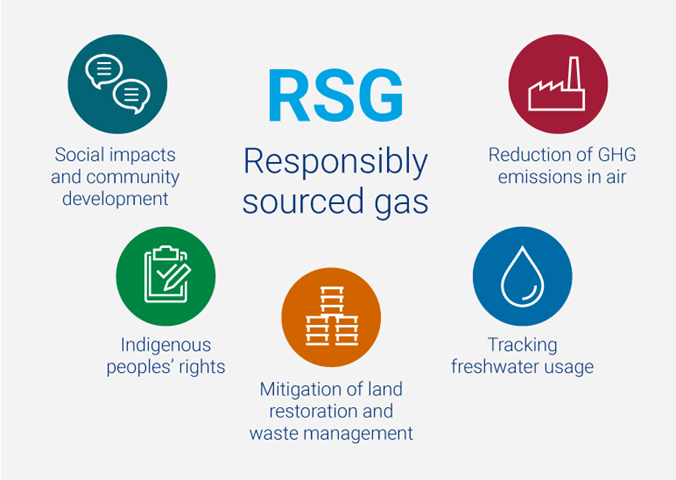Fill out this form to access a complimentary report extract.
Responsibly sourced gas (RSG): a primer
RSG is gaining traction in the US
1 minute read
By Eunji Oh, Research Analyst, North America Gas and Eugene Kim, Research Director, Americas Gas
Investor pressure for faster decarbonisation is prompting US producers to adopt higher environmental, social and governance (ESG) standards and reduce their carbon footprint. Midstream developers and end users, such as utilities, LNG exporters, industrial facilities and blue hydrogen developers, are also seeing a greater need to endorse net zero emission targets.
Many are embracing responsibly sourced gas (RSG) as a means of contributing, though it is very much a nascent market. Our recent report Responsibly sourced gas: cleaner, greener and here to stay draws on insight from our North America Gas Service to explore the rise of RSG in the US. Fill in the form for a complementary extract and further details, and read on for an introduction.
What is RSG?
RSG is gas that has been certified by a third party that ensures it is sourced through environmentally ‘responsible’ procurement practices. Certification is based on standards such as air emissions, water stewardship, land use and community impacts. Currently, certification processes exist only for upstream assets and there is no universal or industry standard.
RSG differs from normally produced natural gas in that producers take extra steps to reduce their carbon footprint, mitigate emissions, and minimise environmental and social impacts.
How does RSG contribute to net zero targets?
Efforts to date in the gas industry have focused on reducing greenhouse gas (GHG) emissions, especially methane, a significant GHG contributor. According to the US Environmental Protection Agency’s (EPA) 2019 estimates, the gas production segment accounts for 48% of all methane emissions from the oil and gas industry in the US.
While methane is the second most abundant anthropogenic GHG after carbon dioxide, accounting for about 20% of emissions, it is 28 times more potent than carbon dioxide at trapping heat in the atmosphere. Furthermore, as methane is short-lived compared with carbon dioxide, achieving significant reductions would have a rapid and significant effect on atmospheric warming potential.
How is RSG certified in the US?
Certification is different to other voluntary initiatives and commitments, as it provides an explicit declaration of achievement by an administering organisation. Operators are awarded a rating or grade based on their performance, verified by a third party. Certification programmes such as Project Canary and MiQ, for instance, are designed to reward producers that meet their standards and employ best practices in methane reduction.
Voluntary actions have helped companies to demonstrate better practices. However, data on these actions are largely self-reported and often inconsistent from operator to operator. Third-party verification enables gas producers to be assessed according to the same standard. Also, certification gives operators actual empirical data, making ESG reporting verifiable.
Our full report goes into more detail on the main US RSG certification programmes and the criteria involved. They vary in approach and requirements. Some, for example, use continuous monitoring and specific technologies; others do not.
Is RSG cost-effective?
The added cost of RSG depends very much on the type of certification programme, whether a third-party audit or assessment is involved for verification, and the level of monitoring technology used. The cost of certification is fixed according to the size of the facility and number of assets certified, regardless of production volume.
The full report explores current RSG certification processes, the programmes available, federal regulations and policy, the economics of RSG certification and purchasing – and what this all means for the North American gas market.






